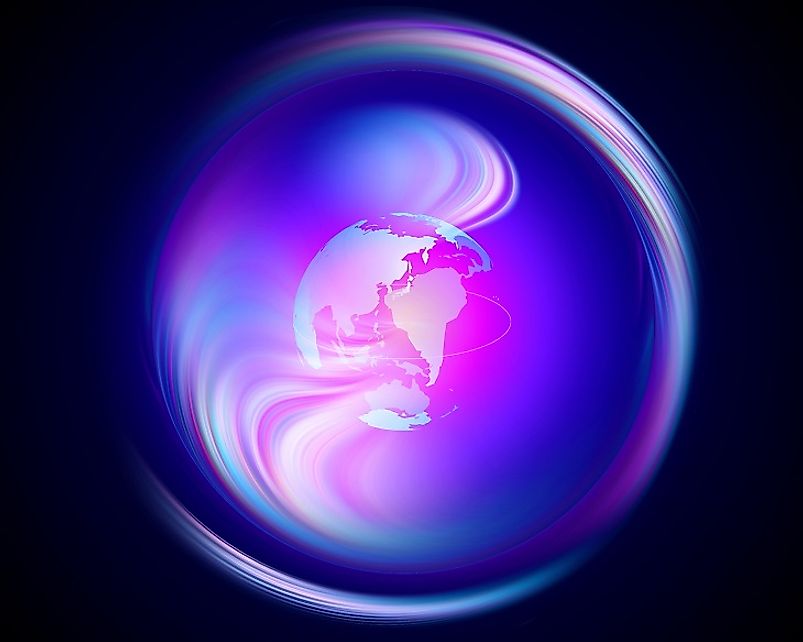What Is The Ozone Layer (Shield)?

Humanity's Shield
The ozone layer (shield) is part of the Earth's stratosphere. The ozone layer is located in the lower part of the stratosphere, in a space between 20 and 30 kilometers above the earth. Stratospheric ozone receives the first blow of the sun's Ultraviolet-B radiation, and absorbs 97% to 99% of the average frequency of the sun's ultraviolet light. Ozone (O3) is present in the entire atmosphere of the planet, but its concentration in the stratosphere is, on average, three molecules of ozone per 10 million molecules of air, which is a much higher a number in comparison with that found in other parts of the atmosphere.
Ozone: The Good and Bad Gas
Stratospheric ozone, the ozone high above our heads, is also called "good ozone". It absorbs the majority of the biologically harmful ultraviolet sunlight (UV-B), by way of shielding the earth's surface. Many experimental studies of plants and animals, as well as clinical studies of humans, have shown the harmful effects of excessive exposure to UV-B radiation. There is another ozone which is located directly at the Earth's surface, however, and this one is a troublemaker. When coming into contact with flora and fauna, ozone shows off its destructive side, and thus the surface level variety of the gas is often called "bad ozone". Ozone enhances various chemical reactions that make high levels of ozone toxic to biological systems. In humans, exposure to ozone can cause all manner of heart and respiratory problems, and may even cause death if exposure is severe enough.
The Lost Radiation
In 1913, the French physicists Charles Fabry and Henri Buisson, while taking measurements of spectral radiation from the sun, noticed that the amount of radiation that reached the earth's surface was not the same as at its origin. Therefore, they theorized that there must be something which delays this radiation as it moves down through the earth's atmosphere. The spectrum of the missing radiation coincides with the spectrum of the known chemical element, Ozone. The discovery of the ozone layer led to a painstaking series of studies conducted by British scientist G.M.B. Dobson and others, which resulted in the invention of the spectrophotometer. The application of this instrument makes possible measurements of stratospheric ozone directly from the ground.
Seasonal Damage
The change of seasons significantly impacts the thickness of the ozone layer in the stratosphere. Years of study have shown that geographical factors also affect the hardness of the ozone shield. The least protected in the world is Antarctica. In some parts of Antarctica, the shield may periodically lose up to 60% of its thickness. This dramatic exhaustion occurs during the Antarctic spring (from September to November), and the thin portion of the atmosphere over the area is known as the "Antarctic ozone hole". Similar processes occur in the Arctic polar region as well. The end of the winter and spring in the Northern Hemisphere during seven years of the last eleven years have shown a significant depletion of the ozone column in the earth's atmosphere.
We Weaken Our Own Protection
Many of us have seen the denotation of CFC-free or "ozone friendly" on the packaging of household appliances and home care tools. Ozone-depleting compounds contain different combinations of chemical elements, such as bromine, chlorine, fluorine, carbon and hydrogen, and are often described by the generalized term "halocarbons". Compounds that contain only chlorine, fluorine, and carbon are called "chlorofluorocarbons", usually abbreviated as "CFC". Carbon tetrachloride and methyl chloroform are major ozone-depleting gases which are often used in industrial production. They are utilized in such industrial processes as cooling, air conditioning, foaming, and also as solvents. Another group of such compounds, halons, are mainly used as fire-extinguishing agents.
Fixing the Hole
Significant depletion of the Antarctic ozone layer was discovered in the early 1980s. This was a prerequisite for the signing of the Montreal Protocol. To date, 196 countries have ratified the Montreal Protocol, which Kofi Annan, the former Secretary-General of the United Nations, has called the most successful international environmental agreement of all time.











